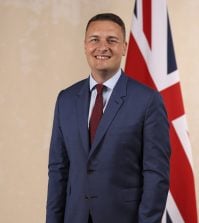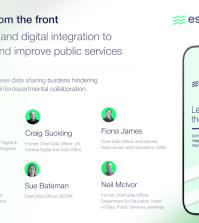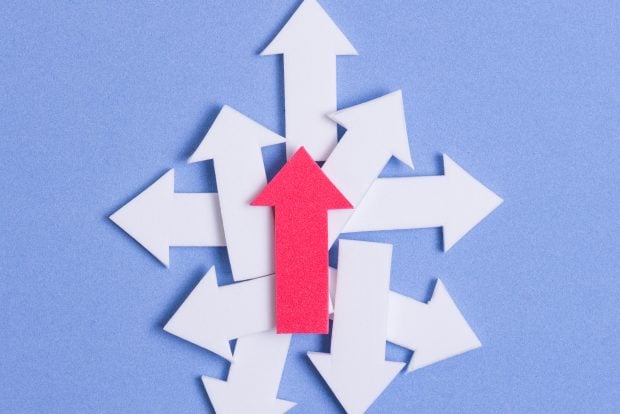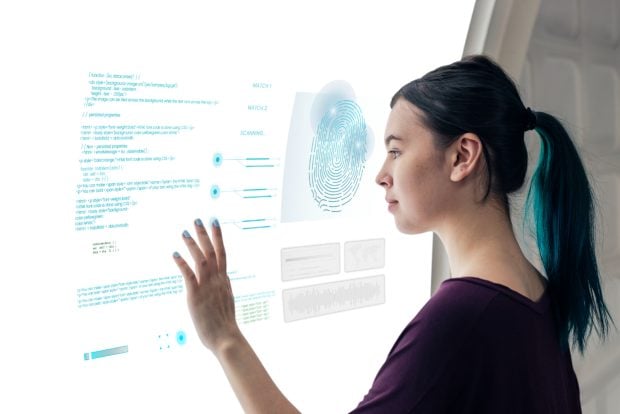Asking the right questions: an interview with Canada’s stats chief, Anil Arora

When the pandemic struck, Canada’s stats agency was barred from doing doorstep surveys – just as agencies from across government came knocking in search of information. Its chief Anil Arora tells Mia Hunt how StatCan tapped into new sources of data
COVID-19 robbed Canada’s statistics agency StatCan of its usual data collection methods – just as demand for accurate information skyrocketed. “There was a tsunami of demand coming our way and, at the same time, we weren’t working in the ideal situation because we couldn’t have our interviewers knock on doors and ask people questions. Our traditional tools, our traditional ways of doing things, had to be rethought almost in real time,” says Anil Arora, the country’s chief statistician and the agency’s chief.
So StatCan embarked on a “revolution” in its data collection work, seeking new ways of gathering information to assess the virus’s spread, appraise the impact of government policies, and keep Canadians informed. The agency turned to crowdsourcing, something it had been trialling as part of its modernisation efforts: in an interview last year, Arora explained how this method was used to assess the street price of cannabis. Responding to the pandemic, StatCan rapidly built online surveys to assess people’s views and experiences.
It also began to work more closely with a wider pool of partners, both tapping into their data and trying to provide the information they were looking for. StatCan worked with the Canadian Chamber of Commerce, for example, to produce reports on how the crisis was affecting the country’s businesses. Arora emphasises that gathering information from partners in this way is a two-way street. “Statistics is a team sport,” he says.
While determining the credibility of data from such sources can be challenging, Arora says a core part of a statistician’s role is to assess information’s accuracy, precision, cohesion, timeliness and interpretability. “We have to play with those dimensions and think: ‘Okay, what are the more relevant dimensions of quality at this stage, in our society, and in these exceptional circumstances?’… It’s better to be generally right than perfectly irrelevant.”
A continuous journey
The coronavirus crisis, says Arora, displayed the agency’s agility. “For an organisation as big as StatCan – we have 5,500 public servants, 1,800 interviewers – we were able to turn on a dime,” he says. “People might have said before that we were this slow old tanker but we’ve proven them wrong. We can do it, and in less than ideal circumstances. The question now is how we sustain that.”
Arora says the organisation’s ongoing modernisation programme enabled it to deliver timely and relevant statistics and analysis during the pandemic. “Thank god we’d started on that journey,” he says. “The investments we’ve made are the reason we’ve been able to do what we’re doing.”

But “modernisation is not an end state,” he adds. “It’s a way of thinking and of continuously understanding that our society is evolving, that data sources are proliferating, and that we have the opportunity to be more impactful.”
The agency is also actively sharing its experience, expertise and data infrastructure. “The pandemic has given us an opportunity to share where innovation has occurred,” Arora says. StatCan is facilitating those conversations across the sector too. “The statistical community is a real close-knit family,” he comments. “We share our experiences and our challenges, and then we think about how we could potentially implement what others have done successfully within our own context.”
And as well as being close-knit, the community is global. Naming international issues such as the future of economic statistics, the digitalisation of economies, multinationals’ role in the data ecosystem and job precariousness in the gig economy, Arora notes that “all of these areas, which are so pertinent today, are being discussed at international fora.”
Room for improvement
Though Arora is proud of StatCan’s achievements, he knows there’s plenty of gaps in the Canadian government’s use of data. In a recent Global Government Forum interview, for example, Canada’s deputy health minister Stephen Lucas noted that the pandemic has highlighted weaknesses in the country’s public health data. “There are things we need to work on and holes we need to plug, and we need to build robust instruments to do that,” comments Arora.
So StatCan is supporting other government bodies to develop and implement their own data strategies. “When you have a system that is as complex and dispersed as ours, there are real challenges, particularly with information flow,” Arora says. The pandemic has highlighted the need to invest in soft skills training, to build system capacity and to develop standards, he adds.
“There’s no magic dust that’s going to fix this; the issues are just too complicated for any one entity to solve. So it comes down to leadership, willingness to change, the expertise that we bring to the table, and building consensus on what the right standards might be.”
Unlocking data silos
To further develop Canada’s use of statistics, though, agencies will have to become more willing to link together and combine datasets. “The value of the information that is locked within the data increases as we start to link it,” Arora explains. He understands why many leaders prefer to keep their databases locked up, he adds – and when the data is particularly sensitive, that view is “absolutely valid”. But unless data professionals can connect information from different sources – such as surveys, administrative data and geosatellites – they’ll struggle to “see trends and patterns emerging, and hopefully, to link those trends to policy decisions, so we can see what impact those policies are having,” he says.

The route to faster progress, he says, lies in addressing people’s concerns and demonstrating the potential value of data-sharing. “A lot of time is spent building relationships, putting in place checks and balances and working with the Privacy Commissioner to demonstrate why we’re doing what we’re doing,” Arora says. “People are generally happy to enable us to link information when they know it’ll result in a valuable outcome that is desired and acceptable to society. It starts with a need and that, I think, is what’s key to breaking down barriers and unlocking silos.”
Keep moving forward
COVID-19 has affected StatCan in all sorts of ways, speeding the agency towards a future it was already carving out for itself, while highlighting previously unidentified limitations and opportunities.
One such opportunity that Arora hopes to seize is that of improving diversity and inclusion within the agency. With its staff now largely working from home, “we can tap into talent no matter where it is in the country,” he says. “We’re looking at our hiring systems, our talent management, our promotion practices, and looking at diversity and inclusion as a real priority because that’s our competitive advantage.” StatCan is also helping to increase diversity across the Canadian federal government by producing data and analysis on where it’s making strides and where it’s falling down, he adds.
As the agency continues to evolve, Arora is concerned that some employees may hanker for the old way of doing things. “I worry about a ricochet at some point, but we need to move forward in the direction we’re going. There is a great need to innovate and great value in doing so,” he concludes. “The best part of this is engaging our staff at all levels, getting their input, harnessing the best of the organisation to move forward, and leveraging international expertise. The pandemic has brought a lot of people, thoughts and ideas together – it’s crystallised, in a sense, where we need to go.”
Anil Arora: five thoughts for better government
To help our readers get the best out of Global Government Forum, we ask interviewees five standard questions on camera – four seeking practical advice and opinions, and one to reveal something a little more personal. Here is the video, and underneath it, an edited version of Anil Arora’s answers.
Can you name one lesson or idea from abroad that’s helped you or your colleagues?
“A really simple idea from one of my colleagues, [John Pullinger] the former head of the Office of National Statistics in the UK, was that we as statistical offices have a duty to be helpful. That very simple phrase has stuck with me, and I think it’s opened up a whole set of possibilities for how we use our talent and our expertise to create greater value for our population.”
Are there any projects or innovations in Canada that you think might be valuable to your peers overseas?
“There are a number of things that we’re doing in Canada that I think are worthy and that are being shared. The range of innovative tools and techniques that we have put in place – whether it’s crowdsourcing, scanner data, the partnership model we’ve established – I think are all inspirational to the overall statistical community, as well as the use of data science and machine learning and artificial intelligence to bring greater value and efficiencies.
“There’s also the work that we’re doing under the High-Level Group for the Modernisation of Official Statistics, to focus on things like input privacy, and how you move the whole necessity and proportionality framework in the context of privacy. We’re sharing the lessons that we’ve learned with the international community. It’s a team sport, so just as we give, we get something back too.”
How can we improve the ways in which senior public officials work with and learn from their peers overseas?
“We need to create informal fora where leaders should bring disciplines together at all levels. One of the things that the pandemic has shown is that you don’t need to get on a plane or stay in hotels, and so for people like me who have to worry about things like budgets, I think it’s opened up a whole new possibility. It may not be ideal but it’s certainly bringing people, ideas and technologies together. And I certainly look forward to those interactions and those networks continuing.
“Secondly, I think we are genuinely playing a leadership role in making sure that the formal systems that exist are more efficient and effective, by bringing this current context and demonstrating the need for change: where we need to be more agile, more responsive, and quicker on the draw – we can’t take months and years to bring in new standards and systems. Leadership is important, and it’s capitalising on the crisis, but for good and altruistic reasons.”
What are the biggest global challenges in your field?
“One is just simply meeting the demands of the policymaker, our citizens, our businesses and of non-profit organisations for more and quicker data. I think that demand is going to continue to grow, including a need for integrated data – so not just the ‘what’ but the ‘so what’ and ‘now what’. I think they’re looking for statistical offices to provide greater value.
“And there’s a demand for us to play a leadership role and to be stewards of data so we have to think about how we deliver different pieces of information, use it responsibly, and provide value to citizens. These are the kinds of demands that are being placed on statistical organisations and by and large, I believe the statistical community is rising to that challenge.
“It’s a really exciting era, because there’s a revolution of using new tools and techniques to engage our citizens and to engage with policymakers both at the domestic and the international level.”
What’s your favourite book or book you’ve read recently that you most enjoyed?
“There are a few that come to mind but I’ll go with a book that I re-read recently: The Black Swan. It talks about these once in a lifetime events which change everything. I certainly enjoyed re-reading that book and changing and challenging some of my assumptions.”























